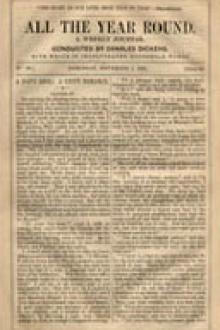Struggles and Triumphs P. T. Barnum (the beginning after the end read novel .TXT) 📖

- Author: P. T. Barnum
Book online «Struggles and Triumphs P. T. Barnum (the beginning after the end read novel .TXT) 📖». Author P. T. Barnum
On the 13th of October, 1860, the American Museum was the scene of another reopening, which was, in fact, the commencement of the fall dramatic season, the summer months having been devoted to pantomime. A grand flourish of trumpets in the way of newspaper advertisements and flaming posters drew a crowded house. Among other attractions, it was announced that Mr. Barnum would introduce a mysterious novelty never before seen in that establishment. I appeared upon the stage behind a small table, in front of which was nailed a white sack, on which was inscribed, in large letters, “The cat let out of the bag.” I then stated that, having spent two of the summer months in the country, leaving the Museum in charge of Mr. Greenwood, he had purchased a curiosity with which he was not satisfied; but, for my part, I thought he had received his money’s worth, and I proposed to exhibit it to the audience, for the purpose of getting their opinion on the subject. I stated that a farmer came in from the country, and said he had got a “cherry-colored cat” at home which he would like to sell; that Mr. Greenwood gave him a writing promising to pay him twenty-five dollars for such a cat delivered in good health, provided it was not artificially colored; and that the cat was then in the bag in front of the table, ready for exhibition. Whereupon, my assistant drew from the bag a common black cat, and I informed the audience that when the farmer brought his “cherry-colored cat,” he quietly remarked to Mr. Greenwood, that, of course, he meant “a cat of the color of black cherries.” The laughter that followed this narration was uproarious, and the audience unanimously voted that the “cherry-colored cat,” all things considered, was well worth twenty-five dollars. The cat, adorned with a collar bearing the inscription, “The Cherry-colored Cat,” was then placed in the cage of the “Happy Family,” and the story getting into the newspapers, it became another advertisement of the Museum.
In 1861, I learned that some fishermen at the mouth of the St. Lawrence had succeeded in capturing a living white whale, and I was also informed that a whale of this kind, if placed in a box lined with seaweed and partially filled with salt water, could be transported by land to a considerable distance, and be kept alive. It was simply necessary that an attendant, supplied with a barrel of salt water and a sponge, should keep the mouth and blowhole of the whale constantly moist. It seemed incredible that a living whale could be “expressed” by railroad on a five days’ journey, and although I knew nothing of the white whale or its habits, since I had never seen one, I determined to experiment in that direction. Landsman as I was, I believed that I was quite as competent as a St. Lawrence fisherman to superintend the capture and transportation of a live white whale.
When I had fully made up my mind to attempt the task, I made every provision for the expedition, and took precaution against every conceivable contingency. I determined upon the capture and transport to my Museum of at least two living whales, and prepared in the basement of the building a brick and cement tank, forty feet long, and eighteen feet wide, for the reception of the marine monsters. When this was done, taking two trusty assistants, I started upon my whaling expedition. Going by rail to Quebec, and thence by the Grand Trunk Railroad, ninety miles, to Wells River, where I chartered a sloop to Elbow Island (Isle au Coudres), in the St. Lawrence River, and found the place populated by Canadian French people of the most ignorant and dirty description. They were hospitable, but frightfully filthy, and they gained their livelihood by farming and fishing. Immense quantities of maple-sugar are made there, and in exploring about the island, we saw hundreds of birch-bark buckets suspended to the trees to catch the sap. After numerous consultations, extending over three whole days, with a party of twenty-four fishermen, whose gibberish was almost as untranslatable as it was unbearable, I succeeded in contracting for their services to capture for me, alive and unharmed, a couple of white whales, scores of which could at all times be discovered by their “spouting” within sight of the island. I was to pay these men a stipulated price per day for their labor, and if they secured the whales, they were to have a liberal bonus.
The plan decided upon was to plant in the river a “kraal,” composed of stakes driven down in the form of a V, leaving the broad end open for the whales to enter. This was done in a shallow place, with the point of the kraal towards shore; and if by chance one or more whales should enter the trap at high water, my fishermen were to occupy the entrance with their boats, and keep up a tremendous splashing and noise till the tide receded, when the frightened whales would find themselves nearly “high and dry,” or with too little water to enable them to swim, and their capture would be the next thing in order. This was to be effected by securing a slip-noose of stout rope over their tails, and towing them to the seaweed lined boxes in which they were to be transported to New York.
All this was simple enough “on paper”; but several days elapsed before a single spout was seen inside the kraal, though scores of whales were constantly around and near





Comments (0)